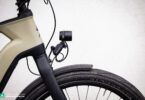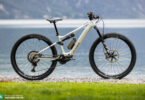Lighter, faster, more powerful and only available in limited numbers! Developed specifically for eMTB racing, the Bosch Performance Line CX Race Limited Edition is essentially a pimped-up version of Bosch’s classic Performance CX motor. In this review we’ll run through the biggest differences between the two models, and find out whether the Race version is also a good choice outside the race tapes.
This review forms part of our big ebike motor comparison test. Here you’ll find an overview of all 13 motors in review, along with lots of exciting background information, and helpful buying advice for your next purchase!
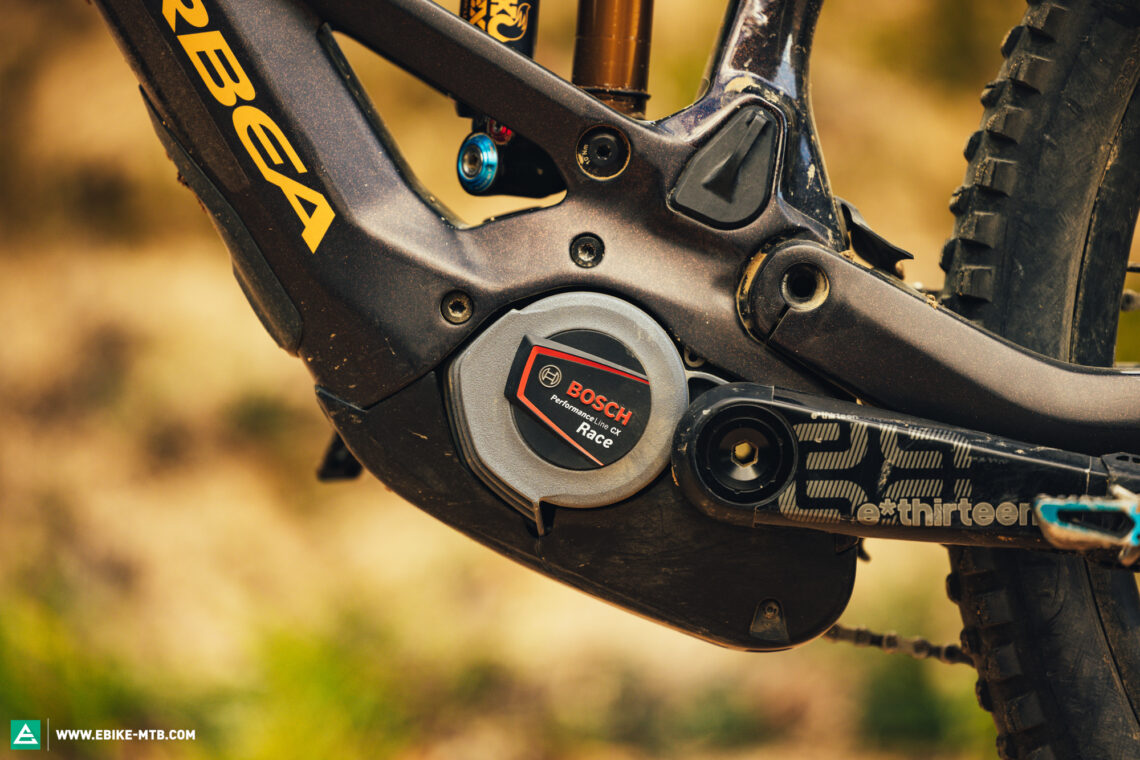
The Bosch Performance Line CX Race Limited Edition is the badass sibling in Bosch’s e-drive family, and was developed specifically for the requirements of eMTB racers. And let’s be honest, what better place to test the capabilities and reliability of an eMTB drive than the gruelling climbs and descents of eMTB races? Bosch have long become an integral part of the eMTB racing scene, providing them with a wealth of athlete feedback to help refine their motors. As the “Limited Edition” name extension suggests, the Bosch Performance Line CX Race Limited Edition is only available in a… limited number of units. This way, the German motor manufacturer can ensure that the motor only finds its way onto race- or at least performance-oriented, high-end eMTBs, like the Orbea WILD M-LTD, Pivot Shuttle AM Team and Mondraker Crafty Carbon XR. As already mentioned, the CX Race motor is based on the proven Performance Line CX drive, which forms part of Bosch’s Smart System and looks pretty much the same at first glance, except for the grey finish and different lettering. In our opinion, Bosch could have thought of a slightly more exciting colour scheme as the grey housing looks a bit cheap.
Bosch managed to shave quite a few grams off their race motor and, as a result, the Race variant is nearly 150 g lighter than the standard Performance Line CX model, tipping the scales at 2.75 kg. In terms of power, the CX Race churns out the same 85 Nm of torque and 600 Watts peak power as the conventional model but offers up to 400 % maximum pedal assistance in Race mode rather than 340%. As a result, the Race drive delivers its power faster, with less input from the rider. The CX Race forms part of Bosch’s modular Smart System ecosystem, which allows for countless battery/display/remote configurations and is constantly being expanded by Bosch. Furthermore, the German manufacturer really places importance on servicing, offering one of the most efficient global service networks out there.

CX Race in detail: a Bosch Performance Line CX motor on steroids?
While at first glance, the Race CX looks almost identical to the Performance Line CX, the devil’s in the detail: the CX Race relies on a different software that includes an additional support mode called “Race”. This is exclusive to Bosch’s Race motor and complemented by the usual Eco, Tour+, eMTB and Turbo modes. That said, manufacturers are free to configure the support modes as they please, either using Race mode instead of Turbo or adding it as a fifth support mode.
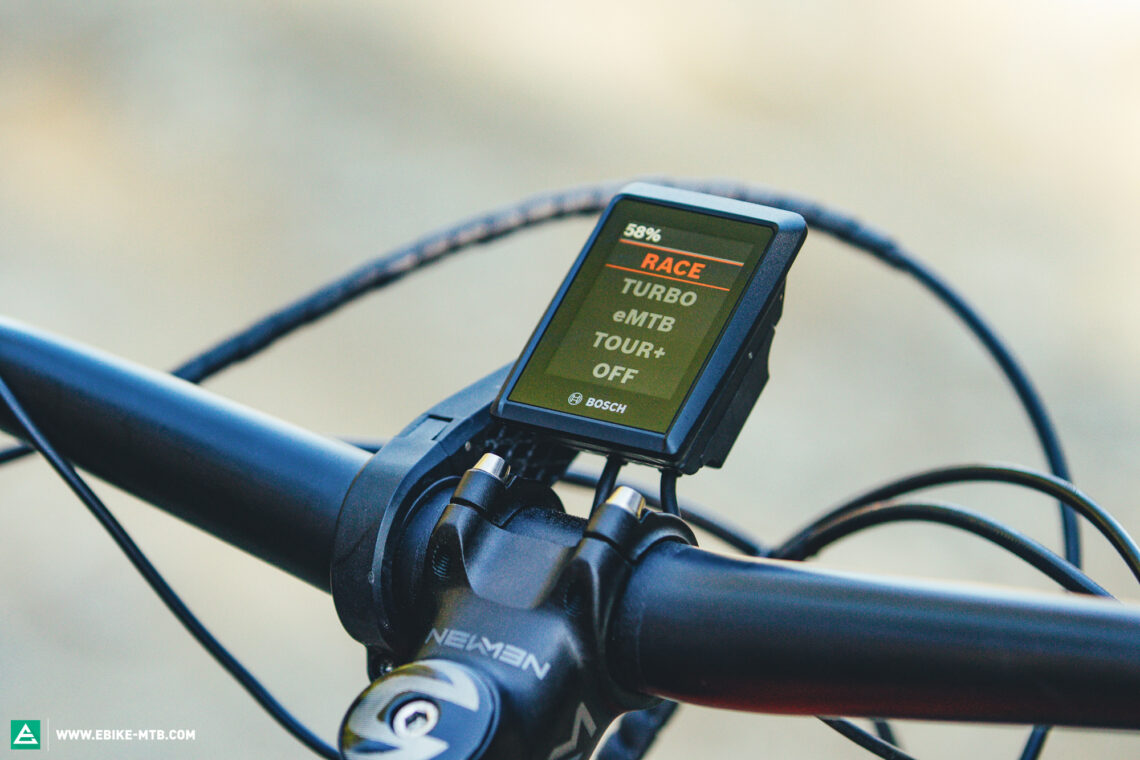
Like the Performance Line CX, the CX Race drive forms part of Bosch’s Smart System, which makes it compatible with the same batteries, displays and remotes. For race bikes, the minimalist mini-remote combined with the integrated system controller and slightly smaller, lighter 625 Wh battery is the most sensible choice. However, many manufacturers also use the bigger 750 Wh battery, which at 4.38 kg is rather heavy, offering a relatively low energy density of 171 Wh/kg. Other batteries with a comparable capacity can reach over 200 Wh/kg, ensuring a better weight to battery capacity ratio. Only a few manufacturers – like Orbea – allow you to choose from different battery options in their configurators, while most brands also offer Bosch’s optional range extender, which expands the main battery’s capacity by 250 Wh.

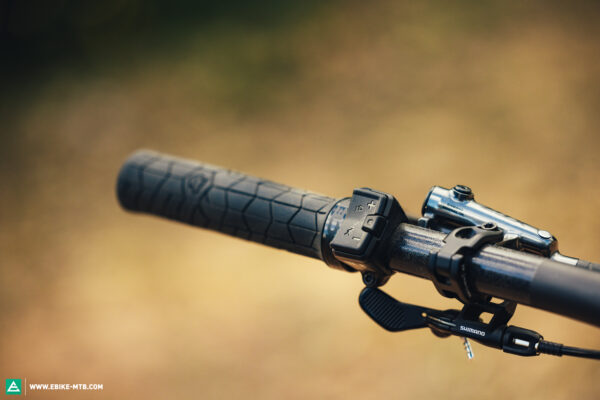
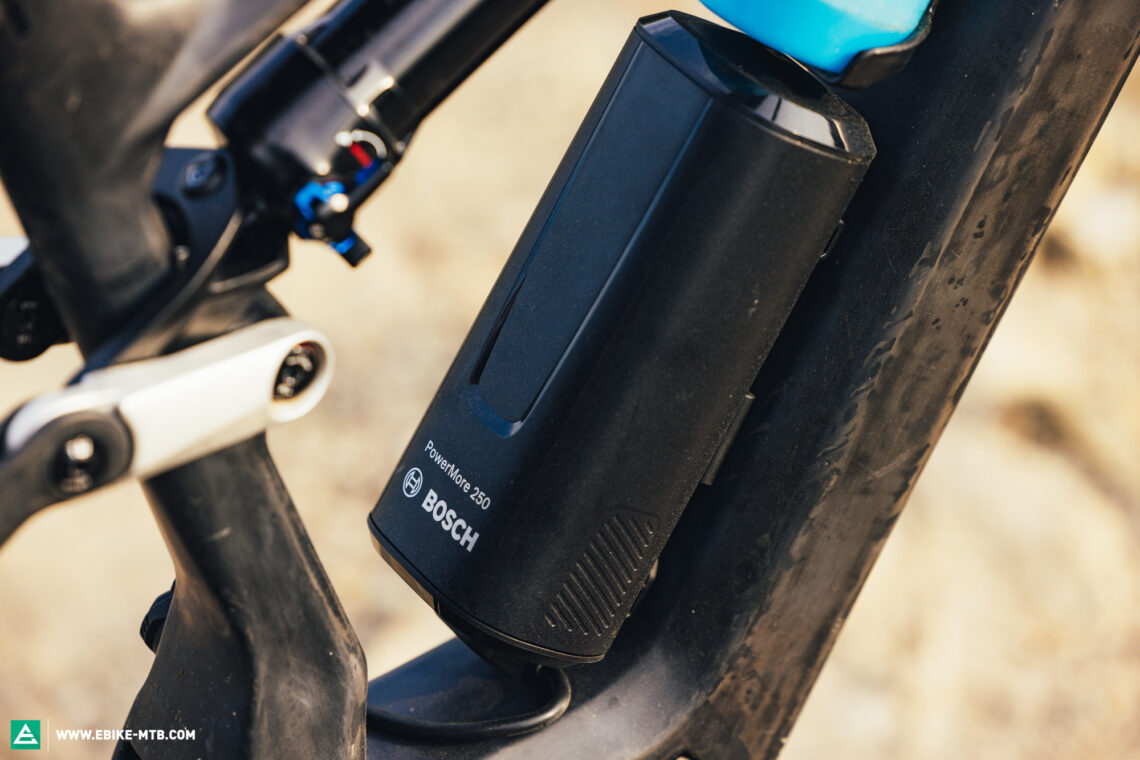
As usual, the eBike Flow app lets you fine tune the motor settings, allowing you to tweak the individual support levels, as well as explaining all the changes you’ve made and the effect they have on the riding experience. Moreover, the app includes a few practical features like navigation, which allows you to plan your route taking into account altitude gain and the resulting battery range. Another popular feature is Bosch’s eBike Alarm, which allows you to take a power nap during the race without having to worry about your bike getting nicked. The latter deactivates the motor functions, making the bike unattractive to thieves and preventing them from riding away with it. However, this only works in combination with the optional Connect module and requires you to subscribe to Bosch’s premium Flow+ plan, which costs € 4.99 per month or € 39.99 per year, though the first 12 months are for free.
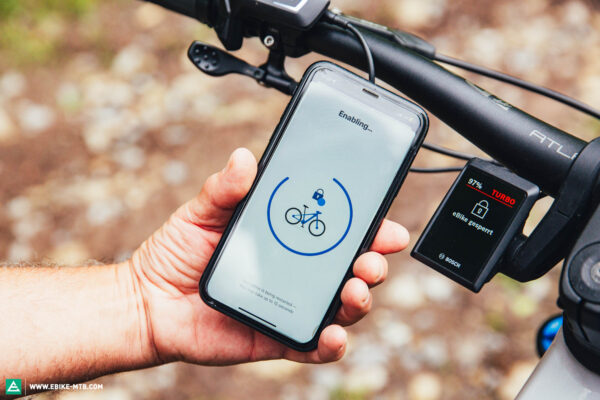
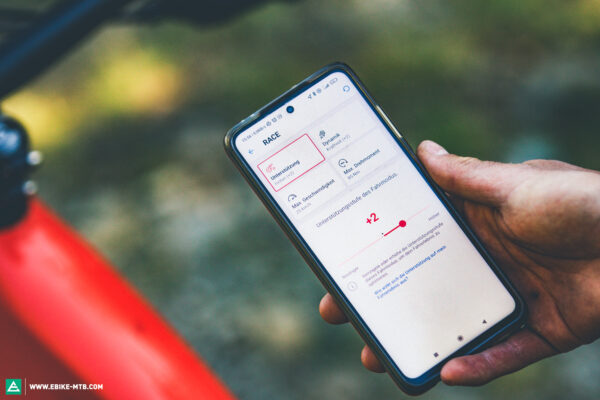
The Bosch Performance Line CX Race in review – Licence to race?
Like the standard CX drive, the Bosch Performance Line CX Race features four support modes, which can be freely configured by the bike manufacturer. Most eMTBs tend to come with Eco, Tour+, eMTB and Turbo, all of which have very different characteristics. Bosch’s dynamic eMTB mode, which adapts the assistance to the respective riding situation, plays in a different league compared to other competitors’ dynamic modes, regulating the support extremely sensitively. While in the standard support modes, the Race motor feels the same as the conventional Bosch Performance Line CX, in Race mode it cranks the volume up to eleven, putting to shame the conventional Turbo mode. At the slightest touch of the pedal, the motor provides 400% assistance, ensuring fast, direct acceleration. However, the abrupt engagement creates an unnatural ride feel and the cut-out at the 25 km/h limit feels a lot more abrupt too. Even in our lab tests, the CX Race proved one of the most powerful ebike motors, always riding slightly ahead of its smaller brother, the Bosch Performance Line CX. Only the Panasonic GX Ultimate and Pinion MGU E1.12 pack a bigger punch and release their power more directly – but also deliver their power less consistently! When negotiating long, steep climbs at low cadences, the increased assistance prevents the CX-Race motor from stalling, allowing you to push through nasty key sections without having to stop pedalling. If you get stuck, the motor’s direct response makes it easier to resume your climb – provided you have good riding skills and know what you’re doing! Beginners, on the other hand, will have a hard time in these situations.
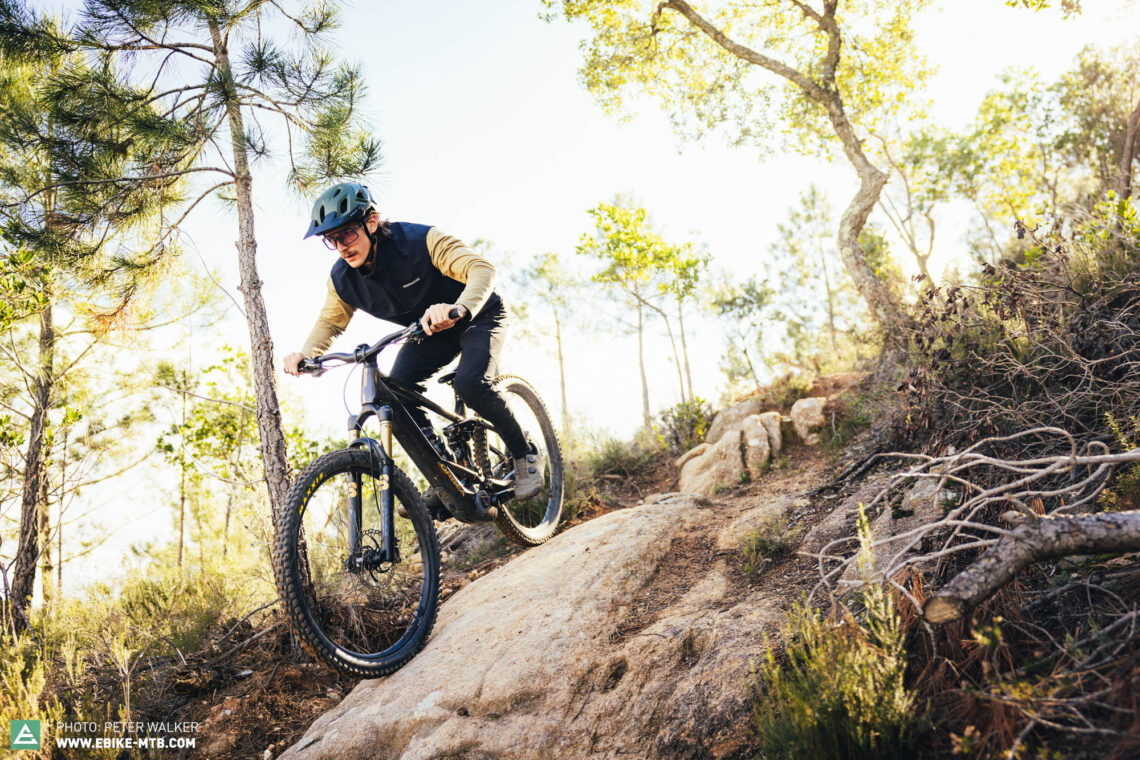
Given its forceful, direct power delivery, Race mode makes it harder to keep the front wheel planted on the ground than Turbo mode in the standard setting. Of course, this also depends on the bike and the rider’s pedalling position. Climbing-oriented e-mountainbikes with a geometry that keeps the front wheel tracking on steep climbs could benefit greatly from the powerful Bosch Performance Line CX Race Limited Edition motor, which would allow them to perform even better uphill. However, physics always has the last word, and on loose terrain the rear wheel can easily spin out of control. In this case, it would make sense to switch into the well-tuned eMTB mode, which is far less abrupt and more sensitive overall. This also makes it a better choice for cornering, especially in tight switchbacks. If you’re heading for the peak in a straight line, Race mode is the way to go.
Sometimes, even one or two turns of the cranks will get the bike going and push you over obstacles. Bosch’s Extended Boost, which we already know from the eMTB mode, is even longer in Race mode, providing better support by pushing you over ledges and root carpets that require you to stop pedalling for a moment. In some situations, you could even just tap the pedal to get the motor to spin the rear wheel for half a rotation. In tricky climbing sections with a sequence of obstacles, the motor’s direct response and powerful character helps compensate for your own power gaps and cadence fluctuations, ensuring consistent propulsion. This comes in handy when you want to re-position the bike or pull it over obstacles, even when your cadence is all over the place. However, the motor’s sustained response puts tension on the chain for a few more seconds, requiring you to time your gear shifts carefully, as shifting with the chain under tension puts additional stress on all the drivetrain components.
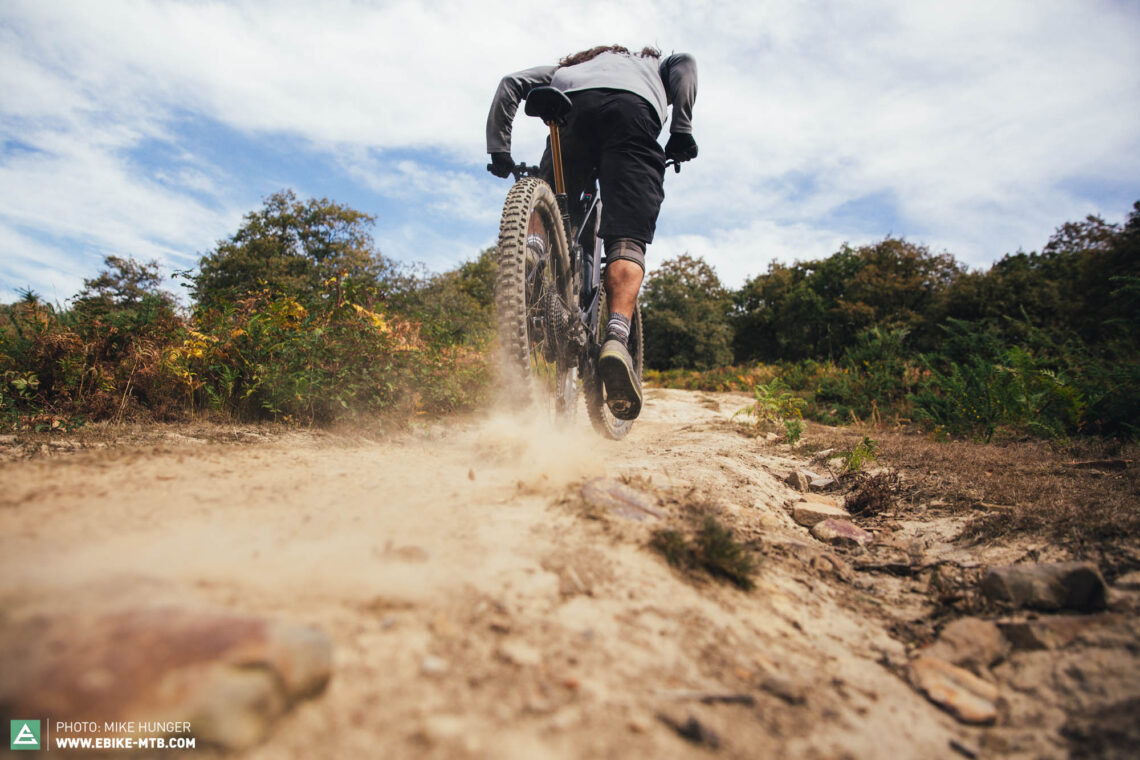
Riding downhill, Race mode only brings a small advantage, for example, allowing you to accelerate out of corners faster. On the other hand, it requires a more vigilant riding style in technical trail sections, where the powerful assistance can send you headfirst into the undergrowth if you accidentally step on the pedal in tight corners. Once again: a drive system is only as good as the eMTB it’s tuned for! In a nutshell, the CX Race’s Race mode can be a blessing for some bikes and a curse for others.
Our conclusions about the Bosch Performance Line CX-Race Limited Edition
Despite being developed specifically for racing, the Bosch Performance Line CX-Race is by no means special. On the contrary: it does everything the CX can do, albeit at a lower system weight and with the additional Race mode. This allows for creative line choices and daring manoeuvres on technical climbs. With the right set of skills, the motor is a lot of fun, and not just for racers. If the Race mode is too much, you can simply shift into a weaker support mode and enjoy the same performance as the classic Performance Line CX!
Tops
- Race mode allows for creative line choices and bold manoeuvres
- Excellent connectivity and modularity allow for countless configurations
- Top-tier global Service network
Flops
- Race mode requires vigilant riding style in technical terrain
- Heavy battery with low energy density
- Grey finish looks a bit cheap
For more information, visit bosch-ebike.com
The test field
For an overview of our big ebike motor comparison test click here
All ebike motors in test: Bosch Performance Line CX (Click for review) | Bosch Performance Line CX Race | Bosch Performance Line SX (Click for review) | Brose Drive S Mag (Click for review) | FAZUA Ride 60 (Click for review) | GIANT SyncDrive Pro2 (Click for review) | Panasonic GX Ultimate (Click for review) | Pinion MGU E1.12 (Click for review) | Shimano EP801 (Click for review) | Specialized SL 1.2 (Click for review) | Specialized 2.2 (Click for review) | TQ HPR 50 | Yamaha PW-X3 (Click for review)
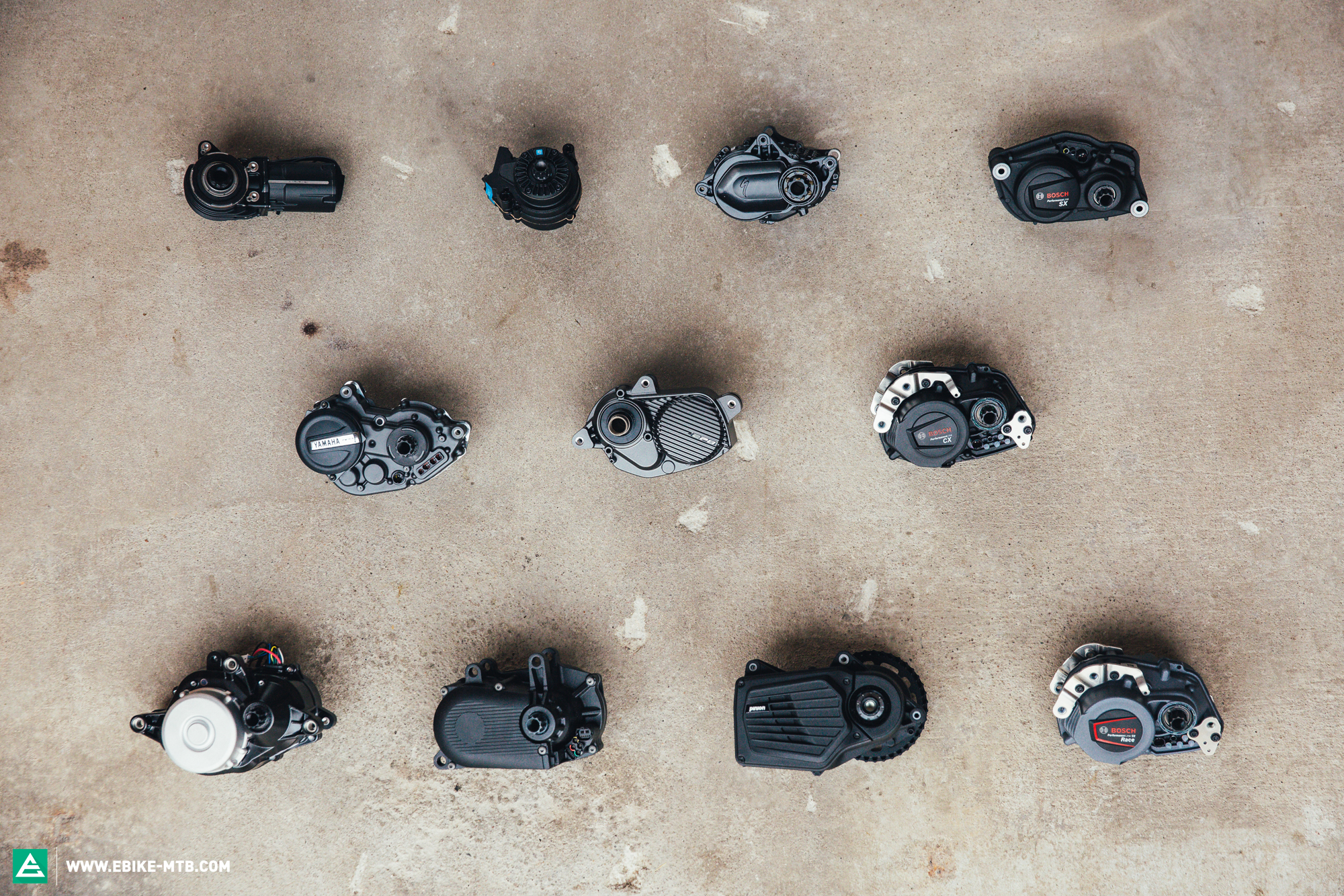
Did you enjoy this article? If so, we would be stoked if you decide to support us with a monthly contribution. By becoming a supporter of E-MOUNTAINBIKE, you will help secure a sustainable future for high-quality cycling journalism. Click here to learn more.
Words: Mike Hunger Photos: Various




